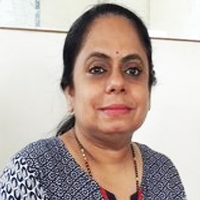Comparison of RGB Indices used for Vegetation Studies based on Structured Similarity Index (SSIM)
Published on: 27th February, 2024
Remote sensing methods are receiving more and more attention during vegetation studies, thanks to the rapid development of drones. The use of indices created using different bands of the electromagnetic spectrum is currently a common practice in agriculture e.g. normalized vegetation index (NDVI), for which, in addition to the red (R), green (G) and blue (B) bands, in different infrared (IR) ranges used bands are used. In addition, there are many indices in the literature that can only be calculated from the red, green, blue (RGB) bands and are used for different purposes. The aim of our work was to objectively compare and group the RGB indices found in the literature (37 pcs) using an objective mathematical method (structured similarity index; SSIM), as a result of which we classified the individual RGB indices into groups that give the same result. To do this, we calculated the 37 RGB indexes on a test image, and then compared the resulting images in pairs using the structural similarity index method. As a result, 28 of the 37 indexes examined could be narrowed down to 7 groups - that is, the indexes belonging to the groups are the same - while the remaining 9 indexes showed no similarity with any other index.
Satellite-Based Analysis of Air Pollution Trends in Khartoum before and After the Conflict
Published on: 16th January, 2025
This study investigates the impact of socio-political disruptions on air quality in Khartoum, Sudan, focusing on key pollutants: Aerosol Optical Depth (AOD), Carbon Monoxide (CO), Nitrogen Dioxide (NO₂), and Sulfur Dioxide (SO₂). Using Sentinel-5P satellite data (2020–2024) processed in Google Earth Engine (GEE), spatial and temporal variations in pollutant levels were analyzed before and after a significant war event in April 2023. The methodology included data acquisition, preprocessing (e.g., cloud masking, spatial filtering), monthly averages computation, visualization, and statistical analysis using Google Earth Engine (GEE), ArcGIS Pro, and Microsoft Excel. Results showed a marked post-war increase in AOD levels, attributed to infrastructure destruction, fires, and diminished industrial oversight, alongside spatially consistent pollution patterns in some regions. CO concentrations exhibited an overall decline due to reduced industrial activities and transportation, though localized anomalies were linked to concentrated emissions. Similarly, NO₂ levels dropped significantly, reflecting reduced vehicular and industrial activities, while sporadic increases suggested localized emissions like generator use. SO₂ demonstrated mixed trends, with reduced mean levels but increased variability, indicating sporadic high-emission events linked to emergency fuel use or conflict-related disruptions. This study uniquely combines high-resolution satellite data with advanced spatial and temporal analysis techniques to reveal the nuanced and multi-pollutant impact of socio-political conflicts on air quality in Khartoum, providing novel insights into the environmental repercussions of armed conflicts. These findings highlight the profound impact of socio-political events on atmospheric pollution dynamics, underscoring the need for robust urban planning, targeted environmental monitoring, and policies to mitigate air quality deterioration and address public health concerns in conflict-prone regions. The study emphasizes the importance of satellite-based monitoring to provide critical insights into the environmental repercussions of socio-political upheavals.
















